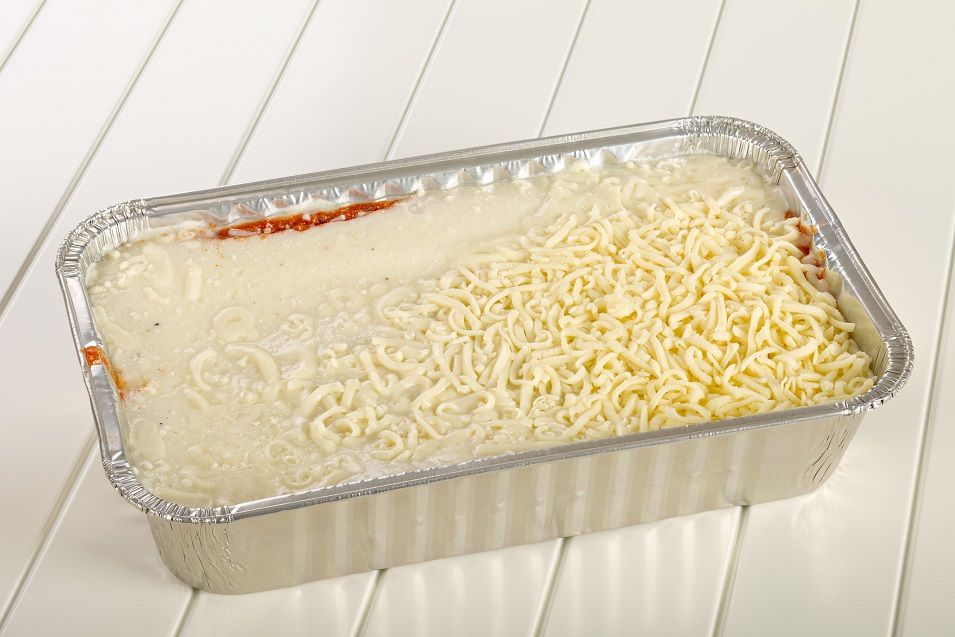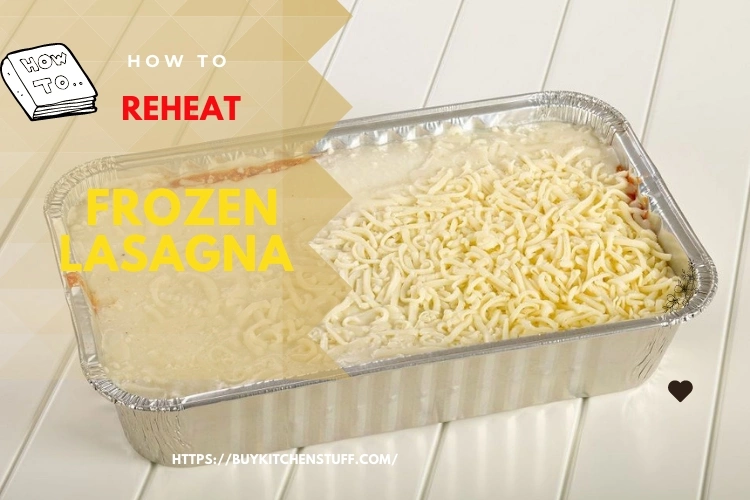by Christopher Jones
Lasagna is an Italian delight filled with an abundance of cheese, meat, and tomato sauce. It's an amalgamation of mouth-watering components which makes it a delicious delicacy. Lasagna is often the primary option as a housewarming gift. It's a dish that meat-lovers can't resist, and keep coming back for seconds.
Whether you cooked it at home or ordered it from a restaurant, more often than not, you taste buds desire a second serving. However, reheating frozen lasagna without ruining its overwhelming taste can be tricky. You need to treat with caution and make sure to rejuvenate this tempting dish.
Contents

Here are a few methods to help you do so.
Take out the frozen lasagna from your freezer, and gently place it in a plate that can withstand the heat in the microwave. Cover the top of the plate with a lid (preferably aluminum foil) to make the lasagna air-tight. This is to make sure the lasagna retains its moisture and doesn't dry out due to heating.
Do not use a plastic wrap as a lid because it will melt inside the microwave and ruin your dish. Before you reheat the lasagna, you need to defrost it. Either you can do that by placing it in the refrigerator to thaw it, or you can defrost it in the microwave. You can just put it in the microwave, and turn on the defrost setting.
A single serving of the lasagna will be defrosted within two to three minutes, whereas a large portion will take approximately 10 minutes to be ready.
After the lasagna is thawed, set the microwave to medium, and wait. The time required for your lasagna to be ready will depend on both size and the number of layers it has within. An average portion should take about a couple of minutes to be adequately heated.
On the other hand, a large tray of lasagna consisting of thicker layers can take up to ten minutes to get heated to the core. To make sure the insides are heated as consistently as the surface, use a kitchen thermometer to check the internal temperature.
Check the temperature at 60-second intervals until it reaches 74 degree Celsius. Your lasagna is then ready to be taken out and served. Take the plate out carefully using oven mitts.
Reheating lasagna in the oven is a more time-consuming process than microwaving. But it's a much effective method as it allows the heat to distribute more evenly.
Before inserting the scrumptious dish into the oven, make sure it's heated to 350 degrees Fahrenheit. Place the lasagna in a pan and seal it in the same manner as the previous method to make sure it doesn't dry out. Poke holes on the surface of the dish to let the internal layers heat constantly.
Once the oven is heated up, carefully place the dish inside the oven using oven mitts. Make sure you place it in the middle rack to ensure proper heating. As the lasagna starts heating up, you will notice the fillings sizzling after a moment. Set consecutive time intervals to check the internal temperature of the lasagna.
Keep baking it in the oven until the internal temperature reaches 165 degrees Fahrenheit. The duration required to achieve this temperature highly depends on the number of layers the lasagna has. The size is also a crucial factor. If you're heating a large serving, it will take between 40 minutes to an hour to get heated thoroughly.
Once the insides reach the required temperature, you need to focus on heating its surface to perfection. A good lasagna needs to have a toasty surface like it did when you cooked it first. To make sure the top surface is perfectly heated, remove the aluminum foil cautiously using your oven mitts.
Then, apply one or two tablespoons of milk to the surface. This is to make sure the reheating doesn't take away its moisture. Without sealing the top this time, heat the lasagna in the same temperature again. In about ten minutes, you will see the surface catching a brownish hue.
This shows that the heat has equally distributed on the top, and your dish is ready to be taken out. Remove it from the oven with caution. Don't serve the lasagna right away as the steam can easily scald you. Let it settle for a few minutes after which it will be ready to consume.
If you want to rejuvenate this tempting dish in the most productive way, reheating it on a stove is your best option. Nevertheless, keep in mind that this method we only recommend for smaller portions of lasagna. The other processes are more effective for larger servings.
However, before heating the lasagna on the stove, make sure to thaw it in the microwave or the refrigerator first. Next, transfer the thawed serving on to the pan, and put the stove on medium-high heat. If you have leftover stock or pasta sauce, carefully pour it along the edges of the pan.
Use an air-tight lid to cover the pan, and bring it to slow simmer. The lasagna will gradually soak in the sauce, which will soften the sheets. This allows the dish to bring back its moisture.
Accordingly, stir the pasta sauce patiently from time to time, and allow it to cook the lasagna for approximately half an hour. The time it takes for it to be ready will again depend on its quantity. If you prefer a toasty and crispy surface, let the lasagna stay for an additional five minutes. When it's ready, take it off the stove and start serving.

The primary concern when reheating lasagna is to replenish the frozen dish properly so that it doesn't lose its initial freshness. An alternative way to do that is by basting the dish with milk or leftover broth. Always be precautions when handling hot meals. Use oven mitts to take them out, and keep steady hands while carrying them.
Moreover, pay attention to the internal temperatures of the dish. Try not to heat it longer than necessary as it might leave you with a dried and flaky lasagna. There is also the possibility of your microwave blowing up if you don't remember to take out the dish in time.
Do not, by any chance, look directly over your meal right after taking it out of your oven. The steam is scalding hot, and can easily burn your face or hands. Make sure you follow the instructions above step by step and take all the necessary precautions as well.
To get better idea about different types of food mills you can visit our food mill related article.
 |
 |
 |
 |
 |
 |
 |
 |

About Christopher Jones
Chris is a true globetrotter. He has been to many destinations and tried different types of food from all over the world, yet he still loves finding new places and tasting their specialties. Chris has always had an entrepreneurial spirit and so he decided to go back to school at age 24 for his MBA at University of San Francisco so that he could have a better understanding of business strategy in order to start his own company. His favorite motto is “how can one live well, travel well, and work well without having good food every time?”
Kitchen Goodness
Check for FREE Gifts. Or get our Free Cookbooks right now.
Disable the Ad Block to reveal all the recipes. Once done that, click on any button below
 |
 |
 |
 |